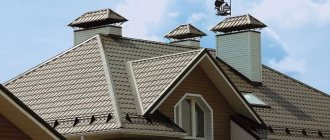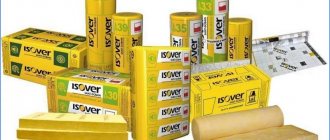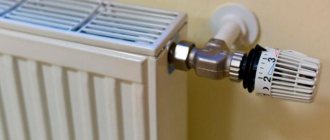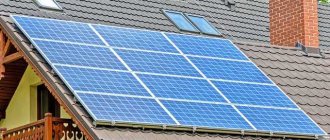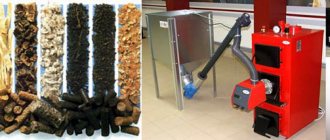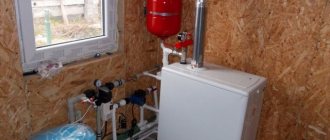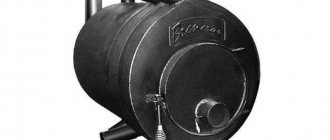When planning your home design, you always want it to be warm and cozy.
To do this, you should follow the instructions when carrying out construction work.
It is also necessary to pay enough attention to the insulation of the roof, in particular to the competent provision of all types of insulation.
How to choose a vapor barrier for a roof and not make a mistake? First, let's get acquainted with the types of vapor barrier materials.
What is a vapor barrier?
In residential premises there is always water vapor that circulates inside it. And according to the laws of physics, it rises with the warm air. Over time, it will penetrate into the under-roof space, where the insulation will begin to absorb .
IMPORTANT!
With the onset of cold weather, all the moisture that has undergone condensation forms an ice crust. And when spring comes, all the ice melts, and the resulting moisture washes away the internal filling of the roof structure. This will lead to its destruction and loss of basic properties: with slight moisture insulation, heat loss increases significantly.
To avoid these consequences, it is necessary to install a vapor barrier, which must be present in any roofing pie . Some believe that finishing the attic with cladding, which prevents moisture from entering, eliminates negative consequences. But it is recommended to always use a special coating that is placed between the ceiling and the insulation.
Dew point problem
Ideally, the roof in the attic should be insulated from the outside at the stage of forming the roofing pie. However, often this is done the other way around from the inside, when the house is already covered with a roof. And here certain problems arise.
The correct and ideal roofing pie is several layers of different materials laid on top of the rafters tightly on top of each other without gaps. Such a sandwich ensures that the dew point will be located on its outer side. As a result, all condensate formed outside will quickly evaporate into the atmosphere.
By doing insulation from the inside, after installing the roof, it is impossible to form the exemplary roofing pie described above. It will not be possible to press the insulation onto the roof so that there are no voids left between them.
Which vapor barrier to choose for the roof?
There are the following types of vapor barriers for roofs:
- painting;
- pasting.
Painting room
It is used more often for high-rise buildings, soft roofs made of roofing felt, iron roofing sheets, where insulation is not used. This vapor barrier is well suited for flat roofs. The main difficulty in using mixtures of this kind is preparing the surface before application. For this type of insulation, the following compositions are used:
- hot bitumen;
- bitumen-kukersol mastic;
- varnish based on chlorinated rubber or polyvinyl chloride.
Pasting (membrane)
This type is more popular, especially in individual construction . Materials for this type of insulation are produced in rolls and this provides some advantages:
- simplification of installation;
- ensuring a tight connection when overlapping;
- reduction in the number of seams.
NOTE!
The adhesive insulation is laid in one layer if the humidity in the room is below 75% , otherwise another additional one .
Types of foil insulation and regulations for their use ↑
In addition to wall materials, the use of vapor barrier is regulated by its type, or more precisely, by the material from which it is made.
- Made from kraft paper. Quite a simple and cheap material, but it is subject to mechanical stress and less resistant to moisture.
- Made from polymer materials. This base is resistant to damage, humidity, and temperatures.
- Aluminum spraying. The layer thickness can be 0.3 microns or more. However, thin metallized films play the role of a heat reflector much worse.
- Aluminium foil. Such vapor barrier materials have a metal layer of 10 microns, which makes them resistant to corrosion, and the degree of reflection is about 97%.
You should select foil insulation based on two factors: the type of room, and the types of film itself. Cloths coated with metal foil on a polymer base are best suited for wet bath conditions. And for dry rooms, you can purchase a cheaper option for spraying on paper. Also, the first option, covered with foil, goes well with heated floors.
Types of adhesive vapor barrier materials
- Waterproofing . Prevents steam from penetrating into the insulation. They have special perforation , which allows vapors to penetrate outside. It is mounted with some clearance from the roof covering, which promotes air circulation between the outer and under-roof space. Has unidirectional vapor permeability, keeps the insulation dry. You can read about waterproofing materials here.
- Anti-condensation . They are equipped with a special fleecy layer , which is located on their inner surface. It retains moisture and prevents contact with thermal insulation. Moisture quickly disappears due to air circulation in the gap. This type of insulation must be laid with an adsorbent layer to the inside of the room. Attached using a counter-lattice.
- Vapor-tight . They provide impenetrable protection to the inside of the roof insulation. Sometimes they have a layer of aluminum foil , which is capable of reflecting part of the radiant energy back inside. It is laid with a ventilation gap to the insulation. Provides good protection from moisture while retaining heat.
- Membranes . They are modern vapor barrier materials that can prevent moisture from escaping while allowing air to pass through . When using membranes, providing an air gap is often not necessary. This material for roof vapor barrier has gained great popularity these days.
Mechanism of condensation formation
Before deciding which vapor barrier to choose for an attic roof, you need to understand the mechanism of formation and movement of water vapor. There are two principles of transfer and formation of condensate:
- Diffusion is the movement of steam from an area of high pressure to an area of low pressure. In winter, such a transfer is carried out from a warm heated room towards the cold outside, where low partial pressure is observed. In the summer, the direction of flow changes, and steam from the warmer and more humid outdoor air is directed into the drier and cooler space of the attic. In the path of the diffusion flow there are attic roof structures (waterproofing, insulation, vapor barrier, finishing). It is the diffusion permeability of these materials that determines the amount of vapor that can penetrate due to diffusion. Since the layers of waterproofing and insulation practically do not resist the passage of steam, they can be ignored. In such a design, only the qualities of the vapor barrier material are important. This is why it is so important to choose a high-quality vapor barrier for your attic.
Important! The greater the difference in temperature and humidity between indoors and outdoors, the greater the diffusion flow.
- Convective is the movement of air and steam flows through loose layers of coatings and thermal insulation materials. The intensity of this transfer is directly related to the strength of the wind and the dimensions of the cracks. In modern roof systems, the function of air protection is performed by layers of hydro- and vapor barrier. They can completely eliminate the possibility of convective moisture transfer.
Under real roof operating conditions, both mechanisms of moisture penetration are present. In this case, the intensity of the diffusion process is directly related to the choice of good vapor barrier and pressure drop. In turn, the convective process completely depends on the quality of insulation work and the use of sealing tapes and mastics.
Attention! When comparing the degree of humidification of roof structures during the diffuse and convective processes, we can say that the latter is much more dangerous, since a larger amount of water vapor penetrates into the structure.
Do you need a vapor barrier for a cold roof?
The special design of such roofs does not require laying two layers: thermal insulation and vapor barrier. This saves money and construction resources. Water vapor that passes through the film ends up between the waterproofing and the corrugated sheet, from where it is removed by an air flow.
Therefore, the main task when installing a cold roof is to ensure good ventilation , which is ensured by creating a gap using a counter-lattice.
Cold roof installation
Do you need a vapor barrier under the corrugated roof of a cold roof? No, it’s not necessary, the main thing is to take care of good ventilation.
Recommendations for use
If the walls are frozen, this will worsen the microclimate. As for a wooden house made of timber or logs, foil vapor barrier is ideal for internal insulation. It can also be used for unheated loggias, laying it under the finishing floor covering to make it warmer. When glazing open balconies, when the perimeter is supposed to be finished with sandwich panels that do not emit heat, foil vapor barrier allows you to reduce heating costs.
Vapor barrier for attic roof
The most commonly used materials are glassine, roofing felt and foil insulation. Also quite effective are modern membranes , which have proven themselves in this sector and are excellent for vapor barrier of soft roofs.
First of all, it is necessary to seal and insulate the various structural elements. The vapor barrier is laid on the insulation and secured using a method that corresponds to the surface material. You can read about insulating an attic roof here.
Fastening to concrete, brick and metal surfaces is carried out using double-sided adhesive tape, laid with a 10 cm overlap . And it is attached to the tree with nails or staples.
CAREFULLY!
The vapor barrier film should be installed without sagging, with slight interference .
The foil film is installed as a reflective layer inside the room so that thermal energy remains inside the building. A gap is provided between the thermal insulation and vapor barrier parts for ventilation, as well as to create a warm air barrier.
Detailed diagram of the roofing pie of the attic roof
The joints of the film are taped with tape made of a material with a similar coefficient of thermal expansion. It is better to press the junctions of the foil to the wall with strips with sealant applied under them.
Finishing
It will be correct to finish the attic only after all procedures related to the thermal insulation of the slopes have been completed. The inside of the attic floor can be finished with plasterboard, plywood, clapboard or boards.
The finishing material is attached to bars or metal profiles. If the insulation is not equipped with a vapor barrier film, but with vapor barrier foil, the finishing material is fixed at a distance of 5 cm from the foil. This allows you to reduce heat loss.
Vapor barrier under corrugated sheets or metal tiles
Metal tiles are a thermally conductive coating, so with the onset of cold weather, condensation causes irreparable damage to them. To solve this problem, it is necessary to provide the roof with proper vapor barrier and waterproofing. Before choosing, you should decide what is more important: price or efficiency ? Let's look at which vapor barrier is better for metal roofing:
Cheap option - glassine and polyethylene
Glassine can last a long time, while it has sufficient flexibility and low cost . However, its large mass, unpleasant odor when heated and difficulties during installation make it not the best option.
Polyethylene retains steam well and protects the thermal insulation layer from moisture . It is cheap, but polyethylene is very easy to damage. It is difficult to install it yourself. Due to its significant mass, it is difficult to install the film to the corrugated sheet using the standard method. Therefore, installation occurs to the inside of the cladding using a stapler. The film is mounted in two layers.
Reinforced film, foil, membranes
In terms of price, it is also an acceptable option. Reinforced film consists of several layers with a reinforcing fabric mesh that adds strength. Light weight and rigidity allow you to install such insulation yourself. Attached with self-adhesive tapes . A significant drawback is the lack of an anti-condensation layer, which can negatively affect the insulation.
Diagram of a metal tile roof
Which vapor barrier to choose for a roof under metal tiles? One of the best options is foil . It has low thermal permeability, which allows you to retain heat in the room, is lightweight and has sufficient strength. The big disadvantage of this material is its tendency to corrosion.
What is the difference between the external and internal sides
Specialized vapor barrier films are made from impermeable polymer materials and cannot change physical properties depending on the side. But for ease of use, manufacturers apply markings on the outside, and some even technical markings that simplify installation. The rolls are also usually wound with the front side facing outwards and it is easier to unroll them “along the wool”, rather than from both sides.
If we consider the two-layer vapor barrier offered by some brands, then one of its sides is smooth and the other is rough.
But this does not in any way affect its ability to retain steam, just as it is not able to additionally prevent the formation of condensation. A rough surface only retains droplets of moisture on the surface, preventing them from falling and rolling off. Considering that this is a vapor barrier, and not a diffusion membrane, and condensate, subject to insulation technology, is promptly removed and dried due to ventilation, there is no particular profit from this property.
IzospanForumHouse participant
Which side of the vapor barrier, smooth or rough, by and large, makes no difference; vapor barrier does not allow either steam or water to pass through on either side. We recommend that in horizontal structures the rough side is downward - droplets of condensation do not hang on this side and, accordingly, do not drip. We recommend the diffusion membrane with the pattern facing outwards - but this is pure marketing. In fact, a vapor-PERMEABLE membrane allows steam to pass through and retains water in any direction.
Working with the floor
When insulating the attic, it makes sense, in addition to the gables and ceiling, to insulate the floor surface. There are two popular methods. The first involves dismantling the old coating and then laying two layers of roofing felt. Following them are placed fibreboards of certain brands. We are talking about M-20 and Pt-100. At the end, the finished floor is laid again.
The second method is based on the use of special types of carpets. First, the baseboards are dismantled, and fiberboard is nailed on top. Carpet materials are glued to the slabs. Before gluing, it is necessary to keep the products unfolded in a dry place for 14 days - this is exactly the time needed for shrinking and leveling.
Another option for preserving heat is to place another layer of thermal insulation under the already installed layer. This is done as follows:
- On the inner lining of the attic, a frame made of beams is installed, between which insulator slabs are placed (stone wool is ideal). The height of the bars should be equal (or less) to the thickness of the insulation layer;
- the thermal insulation layer is protected by a vapor barrier material - it is attached to the frame bars.
Additional solution for the attic: “Ondutis R Termo”
This material is used for thermal insulation of metal and wooden structures. When insulating an attic space or installing a roof in a residential attic, the film allows you to retain heat and reduce heating costs.
The water resistance of this vapor barrier is 1000 mm of water column; as for the minimum vapor permeability, this parameter is less than 10 g/m2 per day. The material easily endures temperature changes ranging from -40 to +120 °C. When considering strength, you should pay attention to the breaking load, which is 150 N along and 130 N across. This indicates that this foil film can support the weight of an adult.
The main advantages of Penofol
Before purchasing Penofol, it is important to pay attention to its advantages, among them the following should be highlighted:
- high environmental friendliness;
- low vapor permeability;
- ease of installation;
- ease of transportation;
- insignificant thickness;
- noise absorption ability;
- high fire safety;
- inaccessibility for rodents.
Membrane films
Diffusion membranes have a porous structure, creating a “breathing” effect for the roof. This material does not allow moisture to pass through and allows steam to escape into the atmosphere.
Main types of membrane films and their technical characteristics:
| Name | Advantages | Flaws |
| Diffuse | · environmental Safety; |
· resistance to ultraviolet radiation.
· resistance to chemicals;
Diffusion porous material competes with conventional waterproofing films, more reliably protecting the insulation.
The use of water vapor barrier materials will provide comfortable conditions in the attic. The correct selection of insulating coating and proper installation will allow you not to worry about the reliability of the roof over your head.
Perhaps someone has experience installing a water vapor barrier in an attic? What problems arose?
Important nuances
If the roof is already covered and you are working indoors, you need to pay special attention to the following points:
- Be sure to leave small ventilation gaps when laying insulation. This is necessary for uninterrupted air circulation.
- When making calculations, take into account not the width of the rafters, but the thickness of the insulation. If necessary, the rafters can be extended using wooden blocks. They must first be treated with an antiseptic.
- If the distance between the rafters is much wider than the insulation boards, do not leave empty spaces. Cut small strips and fill the gaps with them.
- Check remote and hard-to-reach areas carefully. The insulation should fit equally tightly in all niches.
- Don't neglect sealing. Use staples to secure films and Ondutis mounting tape to seal joints and gaps.
You can select the optimal vapor and waterproofing on the Ondutis website. You can use the filter by type of structure or material used, and also ask any questions to the company’s specialists.
The main disadvantages of Penofol
Some consumers refuse to purchase Penofol when they learn about its shortcomings. Among them:
- high penetration;
- inconvenience during installation due to the need to use special adhesives;
- Insulating walls from the outside with Penofol involves using the material only as an additional layer of thermal insulation.
As for high penetration, it will manifest itself even at low pressure; this characteristic is due to the softness of the material.
Rules for choosing aluminum foil
Vapor barrier of a bathhouse with aluminum foil is done in various ways. This depends not only on the type of building, but also on the features of the walls. The simplest foil is easy to install, but it is very fragile - the canvas breaks and wrinkles. There are denser and more effective types of bases covered with aluminum foil.
What kind of thick foil can be used in a bathhouse, in addition to the usual rolled base:
- Folgoizolon is a foil that is applied in a thin layer to a polyethylene foam base. Manufactured in the form of sheets or rolls. The thickness is 2-10 cm.
- Foil, which is applied to a layer of kraft paper or dense cellulose. Usually sold in rolls. Thickness 0.03-1 mm.
- Rolled foil mineral wool. There is a variant of the same material, but in the form of dense mats (squares). Thickness 0.8-1 cm.
Attic insulation
Attic insulation involves thermal insulation of slopes, ceilings and gables.
The slopes are insulated from the inside in the same way as an attic roof.
The only thing is that if the procedure is carried out at the stage of roof installation, it can be performed from the outside.
In this case, the insulation technology looks like this:
- on the inside, a vapor barrier and plank sheathing are attached to the rafters;
- on the outside, insulation is placed in the space between the rafters on the filing;
- then the roof is covered with a diffuse film and the roofing material is installed.
The insulation of the floor is carried out according to the scheme described above.
Flat roof insulation
Installation technology
Most often, vapor barrier materials with foil are used to equip a cold attic and a warm attic. In the first case, the insulation system must be installed along the ceiling, in the second - along the slopes.
To install a vapor barrier correctly , you need to adhere to generally accepted construction rules:
- The vapor barrier of the slopes should be a continuous barrier that prevents the penetration of moisture. To do this, the canvases need to be sealed together with regular tape.
- Strips of vapor barrier material are usually laid strictly horizontally. The first panel is fixed at the ridge girder, the second is placed on top to cover the edge of the installed panel on the side of the room that is being finished.
- The canvas spreads from the attic side onto the wooden floor in strips, extending onto the walls along with vertical ceilings of 20 cm each. It turns out to be a kind of pallet with sides.
- Then the material is rolled out as if the roll was formed by the manufacturer himself. The installation side is indicated on the vapor barrier - it cannot be changed at your discretion.
- On pitched roofs, the material is stapled to the rafters from the inside. If they are fixed with a block, then a counter-lattice must be placed on top under further cladding.
- If you need to put a vapor barrier in a system with open rafters, then it is placed along the outer ribs, then rigid slab insulation is installed. The fabric is secured with a stapler.
- If you are installing a ceiling on the ceiling side, then you need to buy self-adhesive materials.
It is worth noting that accessories for foil insulation must be selected from the same manufacturer as the material. Of course, you can find universal tape on sale that is suitable for joining materials of any kind, but in the case of foil structures, you need to remember about tightness. Therefore, here it is better not to experiment with options for adhesive tape for gluing, but to take it from the same company that produces the foil sheets themselves.

